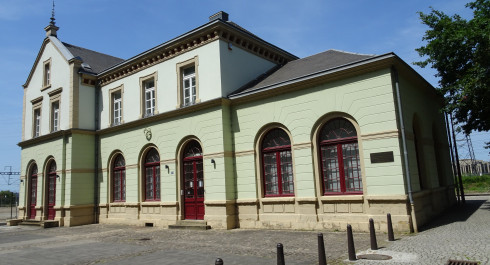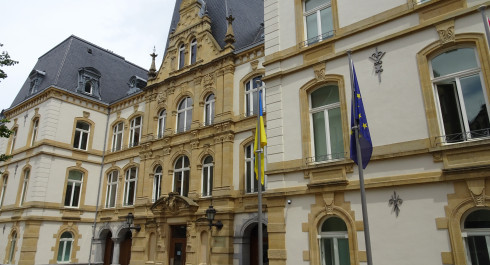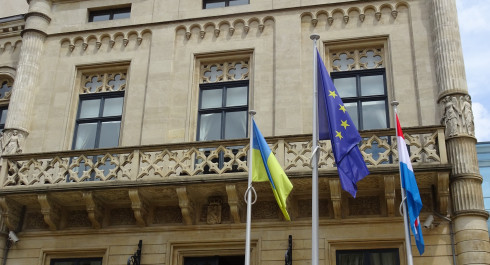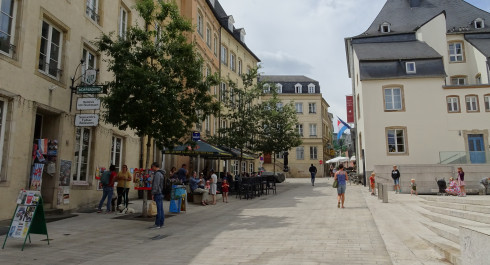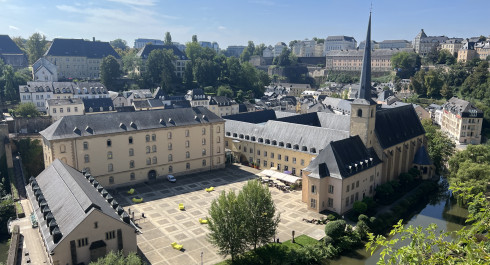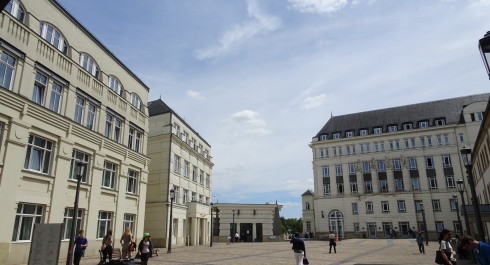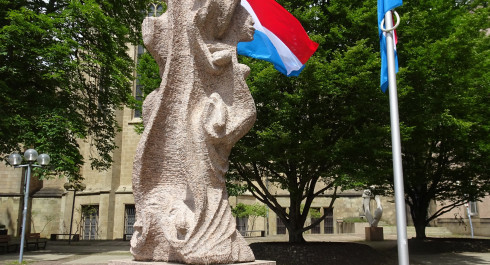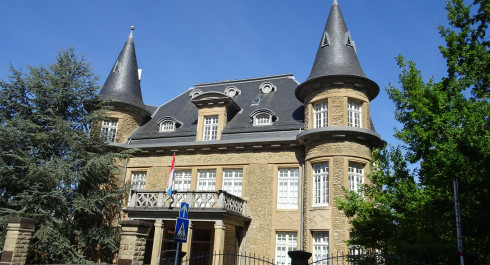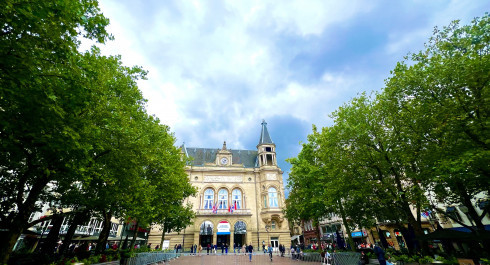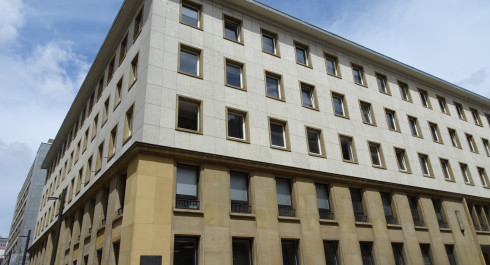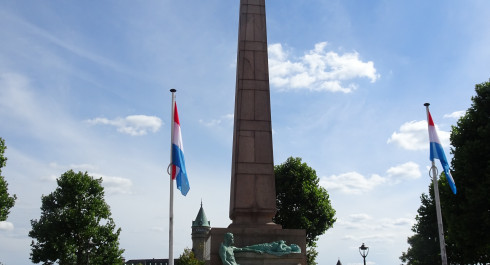
11. Gëlle Fra
11. Gëlle Fra
This monument ‘Gëlle Fra’, the ‘Golden Lady’, visible from afar and located on the ‘Place de la Constitution’, was initially erected as a memorial for the fallen soldiers of World War I. The Luxembourg artist Claus CITO was inspired for this work by statues from antiquity as well as Italian Renaissance art.
The memorial consists of a stylized stone coffin with two bronze soldiers and an imposing 21-metres-tall granite obelisk at the top of which stands a 3.30-metres-tall bronze gold leaf covered statue of the goddess of victory Nike or Victoria.
The monument has had a very eventful history. On the 21st of 0ctober 1940, it was dismantled by the German occupation forces as a way to enforce the Germanification of the country’s citizens. A steamroller was used to bring the monument to fall, causing the statue to break into three parts. Luxembourg resistance fighters managed to recuperate and hide the pieces. Fortunately, the two bronze soldiers remained intact and were safely secured by a local construction company.
After the war, the base and the two soldiers were restored as a national memorial. It was meant to commemorate not just the soldiers killed in World War I, but also the victims of 1940-1945 and the soldiers who lost their lives fighting in the Korean War.
The ‘Golden Lady’ herself remained missing for thirty-five years until January 1980, when construction workers discovered her by chance under the stands of the municipal Josy Barthel football stadium. After extensive restoration work, the ‘Gëlle Fra’ was officially inaugurated on 23rd of June 1985.
Interesting Detail
The proportions of the statue are well balanced only when its elevation is over 20 metres.
The present ‘Gëlle Fra’ differs somewhat from the original version, the result of damage caused when the monument was torn down. The ‘Golden Lady‘ now looks down and not, as in the original version, towards the city centre. In addition, her feet had to be completely renewed as many parts were missing, for instance a big toe. A young student, Cosy Fischer, who witnessed the destruction, had secretly pocketed the big toe and used it as a paperweight. It is presently in the private collection of a Luxembourg antique dealer and not for sale.
In 2010, the ‘Gëlle Fra’ was flown to the Shanghai World Exhibition where she was displayed in the Luxembourg pavilion. For security reasons, an exact copy of the statue was made and the original has been regilded.
Significance for Human Rights
Although the statue was originally erected to commemorate the soldiers who lost their lives in World War I, over time she became a general symbol for freedom and independence.
The restoration of this monument in the 1980s was an important undertaking, a tribute for the victims of war and oppression and a warning to remain alert.
The ‘Gëlle Fra’ is not just a symbol of the capital city, but also an appeal for people’s commitment to protect freedom, equality and justice.
Article 1
All human beings are born free and equal.
Article 3
Everyone has the right to life and to live in freedom and safety.
Article 15
Everyone has the right to a nationality.

